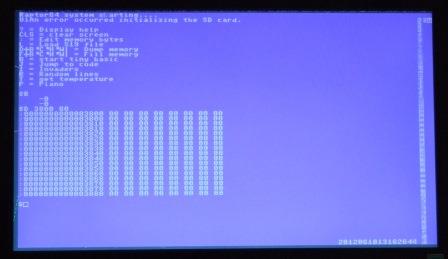Raptor64
Project maintainers
Details
Created: Apr 26, 2012
Updated: Feb 16, 2013
SVN Updated: Feb 18, 2013
SVN: Browse
Latest version: download (might take a bit to start...)
Statistics: View
Bugs: 0 reported / 0 solved
Other project properties
Language:Verilog
Development status:Planning
Additional info:
WishBone compliant: No
WishBone version: n/a
License: LGPL
Description
Raptor64 is a 64-bit multi-context RISC cpu that supports hyper-threading. There are 16 register sets that the processor automatically switches between at high speed. The processor is fully pipelined with a nine-stage pipeline. Stages: IF/RF/EX/M1/M2/M3/M4/WB/TR. Communication with memory is via a 32 bit MIG bus. The processor has a 8kB instruction cache and 16kB data cache. Also included is a 16 entry TLB for memory management. The processor uses 32 bit instructions.
I've created two versions of the processor a non-hyper-threaded version (sc) in addition to the hyper-threaded multi-context(mc) one.
Features
- 32 entry 64 bit general register file
- 32 bit opcodes (4 per 128 bits)
- SQRT,Multiply/Divide/bit field/ + all the regulars
- conditional move, exec,
- explicit I/O instructions ( also useful for uncached access)
- immediate constants may be built using SETLO,SETMID,SETHI instructions
- two address modes, displacement (d15[ra]) and scaled indexed (d2[ra+rb*scale])
- 16 segmentation registers
- SimpleMMU - 32 tasks supported with mapping of 128MB space into 256kB pages
- 64 single bit semaphores
- 8kiB instruction cache, 16kiB data cache
- 8 way 8 entry set associative TLB
- single cycle execution of most instructions (loads stall the pipeline)
- branch prediction with a 256 entry branch history table
- return address stack prediction
- internal Harvard architecture
- communicates externally using a 64-bit WISHBONE bus
Software
In the works is currently a high level language compiler for a language similar to 'C'. Several additional keywords have been added (eg. interrupt). Well I finally fed the output of the compiler through the assembler. A couple of bug fixes later the sieve is able to run from SD Card.
There is also an assembler (also a work in progress).
Tiny Basic is available in the boot rom. Works with a few bugs yet.
Status
Currently the processor is running code in an FPGA. The bootrom is slowly expanding. Numerous software and processor fixes have taken place. Still a long way to go. The processor is being revamped to use a 32 bit ISA, it was originally a 42 bit ISA.
The core is running on an Atlys board, and now able to load a boot program from an SD Card. Hopefully that will speed the software development up. Prior, the only software was updated by updating a Verilog source file, requiring the entire system to be rebuilt for a software update.
The ISA is still under constant review; it may change to use an 8-bit master opcode field as opposed to 7-bits. There's lots of instructions I'd like to add, and no room with only 7 bits.
Pics

